Ruf Automobile: a tour of Pfaffenhausen
Rufplatz, Pfaffenhausen. A roundabout in the middle gently guides local traffic in an anti-clockwise fashion, the buildings around the outside playing home to an automotive showroom, service centre, main production factory, panel beaters and paint shop belonging to one of the world’s most renowned car brands.
Sound familiar? The set-up is not too dissimilar to that at Porscheplatz some 180 kilometres away, yet Rufplatz, like the Ruf Automobile company itself, has always liked to do things its own way. Founded in 1939 by Alois Ruf Sr, ‘Auto Ruf’ was originally a general vehicle repairer. Alois Ruf Jr arrived in January 1950 and immersed himself in his father’s business as he grew up, though it took a bizarre accident for Ruf as a company to become involved with Porsche vehicles. “My grandfather was driving his bus when a Porsche 356 Karmann shot past,” says Marcel Ruf, third generation of the Ruf family dynasty. “The driver lost control during his attempt at passing and put the 356 in a ditch, rolling it twice.”
“My grandfather stopped to check he was okay and explained he owned a garage who could repair the car. A few days later he ended up buying it as salvage. Once repaired, he was driving the 356 through Munich when a man stopped him and my father at some traffic lights and offered to buy the car. A deal was done, and my grandfather realised he was on to something: for years he had been dealing with customers who offered trade-ins or wanted to haggle for cars, and yet here was a guy who wanted to pay good money for the car at the side of the road!”
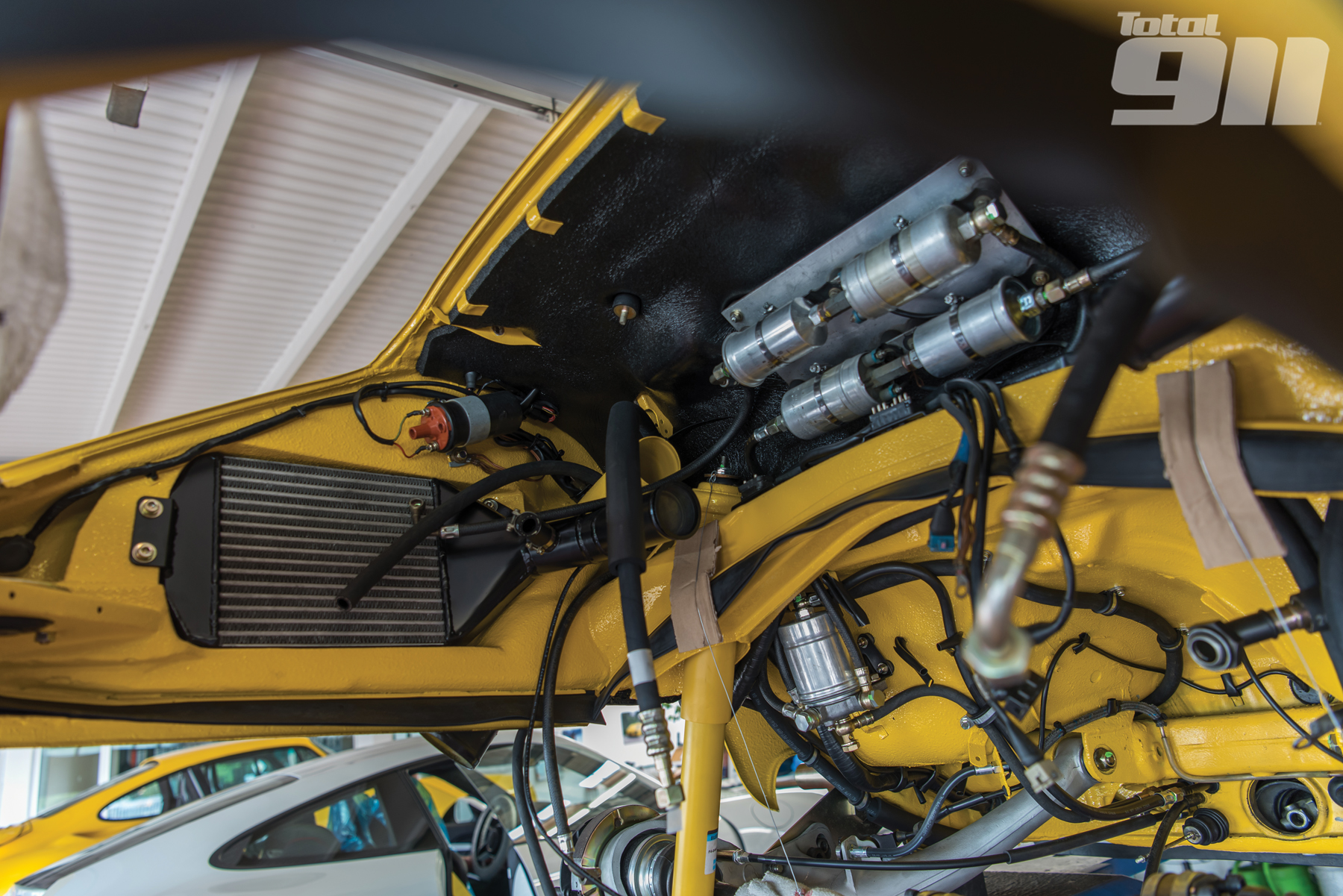
From that moment on, Ruf became intertwined with Porsche cars, enthusiasts of the 911 turning to Pfaffenhausen for performance upgrades in the 1970s as Porsche hesitated in its development of the Neunelfer. “In 1978 the 911 SC was detuned at 180hp. Our cars were capable of 230hp,” Marcel says, clearly proud of his family’s past achievements.
The culmination of this came in 1981 when the German Federal Motor Transport Authority recognised Ruf as a vehicle manufacturer in its own right, something which has separated the company quite spectacularly from its rivals in the tuning sector ever since. By 1983, the first sports car with a Ruf chassis number was born in the Ruf BTR, a turbocharged car with 374hp and, significantly, a five-speed gearbox. Porsche meanwhile would continue to use a four-speed gearbox on its 911 Turbos for another six years.
Ruf’s seminal moment came in 1987 at the Nürburgring with that video of Stephan Roser dancing the Ruf CTR ‘Yellowbird’ at speed through the hazardous Green Hell. Later posting a monumental top speed of 342kph against its rivals for a magazine test at Nardo, Italy, the Ruf Yellowbird was duly crowned the world’s fastest production road car for 1987.
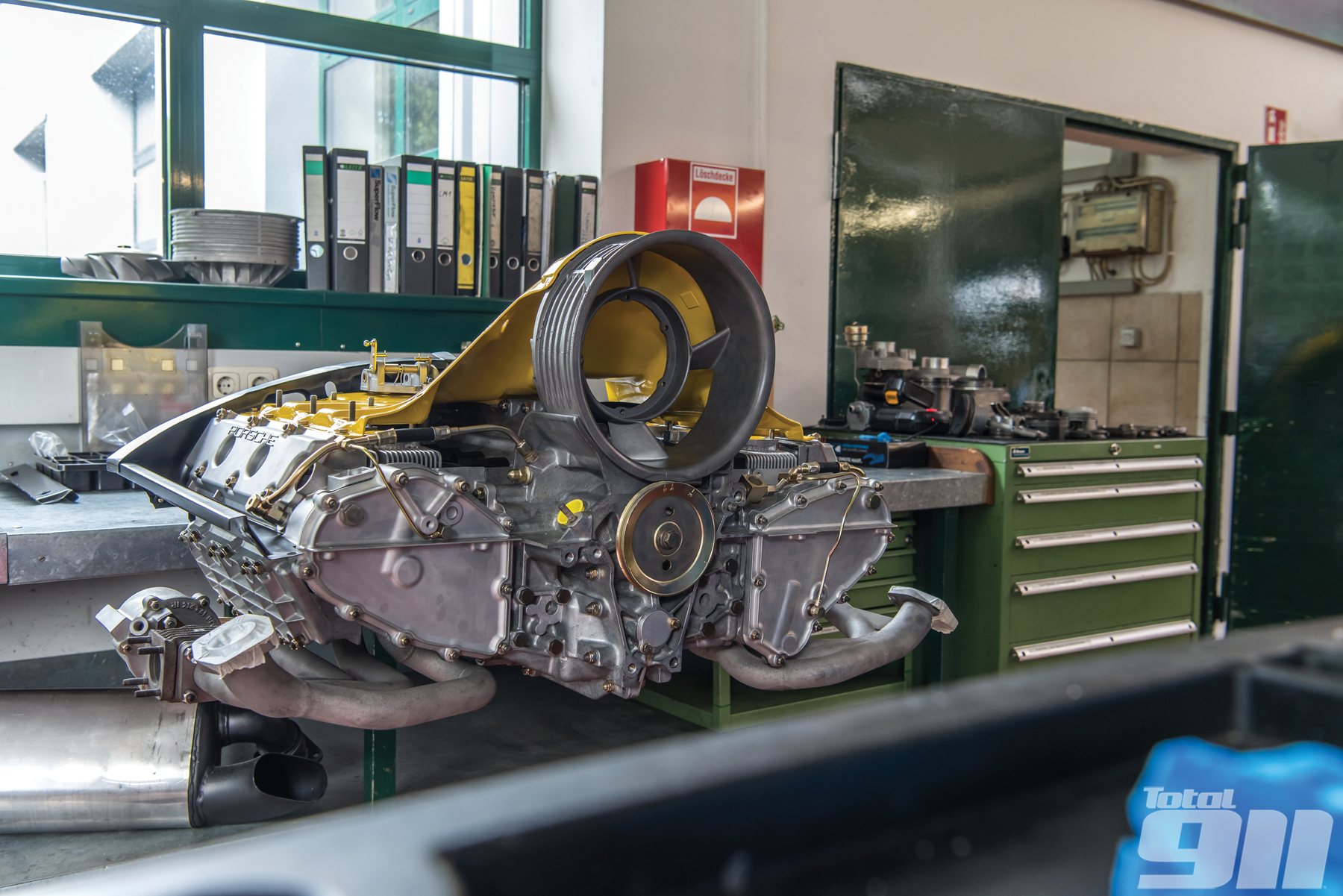
Iconic creations with wonderfully acronymed names such as the Turbo R, RCT and RGT have all followed since, each one a breathtaking and often record-breaking feat of automotive engineering. Even in our contemporary world where specialists clamber to offer backdates of the Singer-inspired variety, Ruf still remains wholly relevant to an audience as loyal as it is large, as proven by the release last year of the all-new CTR 2017. A 30-year celebration of that first Yellowbird, it came equipped with a monstrous 700hp and a mere 1,200kg mass. Unbelievably, it sold out within a week.
Pleasingly, despite such prolonged growth and continued success, Ruf remains a family-run business, spearheaded by Alois and his wife Estonia, while son Marcel oversees day-to-day operations. It is Marcel who takes us for a tour, informing us the company has some 60 employees at Rufplatz, with an impressive 30 hand-built cars rolling out of the factory each year – more than one a fortnight.
Stepping onto the factory floor itself reminds us of more traditional times up the road at Porsche. There’s no moving production line, employees instead busy working around individual cars wearing braced overalls in the customary dark green of Ruf. Everything at Ruf is hand built, so there are no robot arms whizzing panels and components from one station to the next. It’s a breath of fresh air and goes some way to explaining how Ruf can offer an unrivalled attention to detail in so many aspects of its builds.
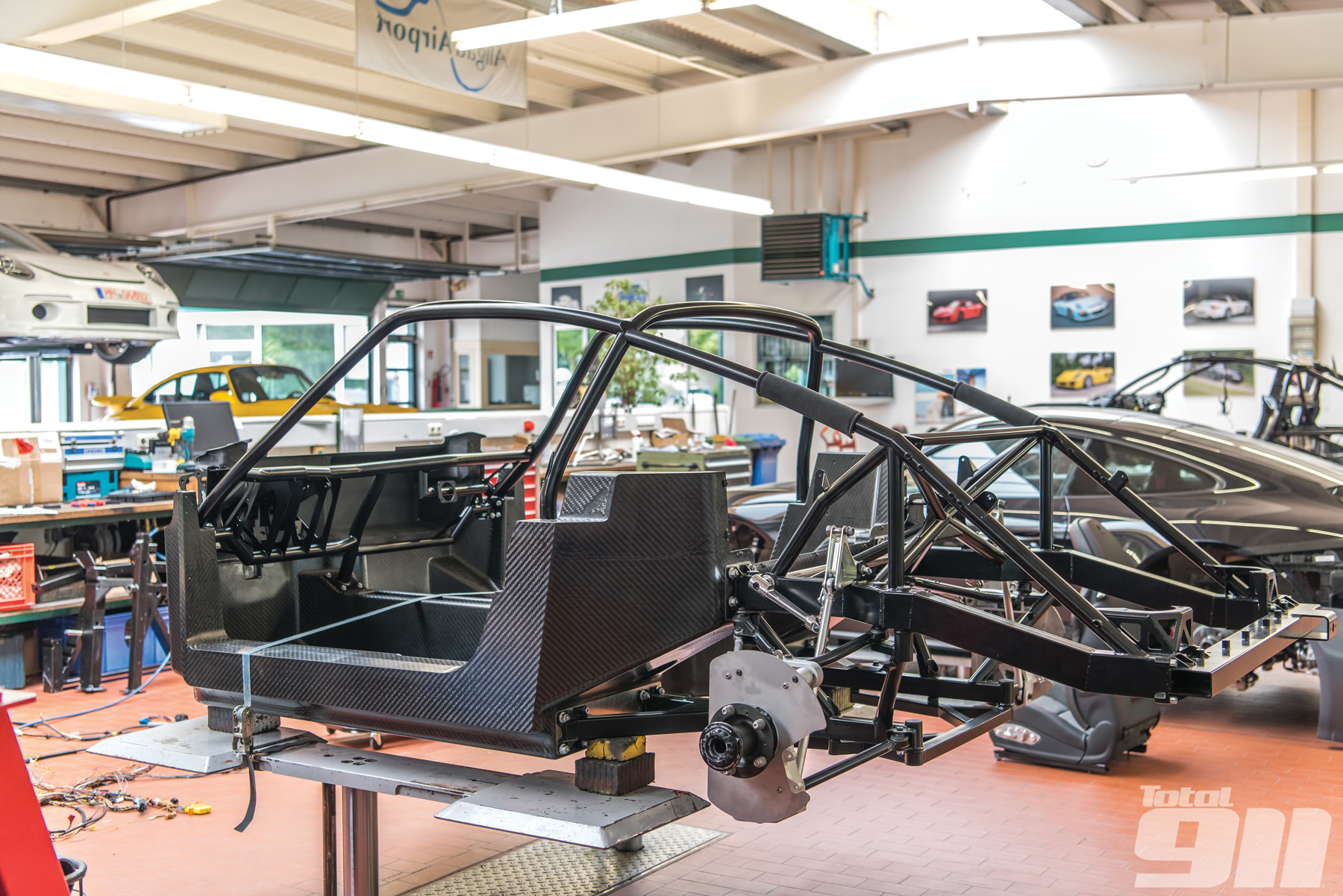
Ruf enjoys a close relationship with Porsche, the extent of this being the opening of a Porsche Service Centre on Rufplatz some nine years ago. It means the company can oversee the care and maintenance of factory Porsche cars as well as its own. “It’s good for everybody,” Marcel says as we take a look at both new and old 911s gracing the ramps.
Ruf is proud to be a manufacturer in its own right though, the fruits of which can be found with both the CTR and recently revealed SCR, which
uses a carbon-monocoque chassis for the first time. It’s a huge investment for a company of this size, but there are plans to use the chassis as a base for other projects going forward.
As well as its SCR, built to commemorate 40 years since the birth of the original SCR in 1978, Ruf has worked hard on the evolution of its first Yellowbird as we’ve previously mentioned. Very much a modern-day take of the original, the CTR 2017 has a 7cm-longer wheelbase than the Eighties car, despite its overall length being the same. The car is 3cm wider each side, noticeable at the base of either side of the windscreen, while an extra 2cm of body has been added to either side of the front bonnet. “Its appearance is more muscular,” Marcel himself says. “It’s as if the CTR has been to the gym.”
Production of both these breathtaking cars is already in earnest, making Ruf an ever-more busy and exciting place to be. The company will celebrate its 80th birthday next year, a quite remarkable achievement for a company used to creating, well, the remarkable.
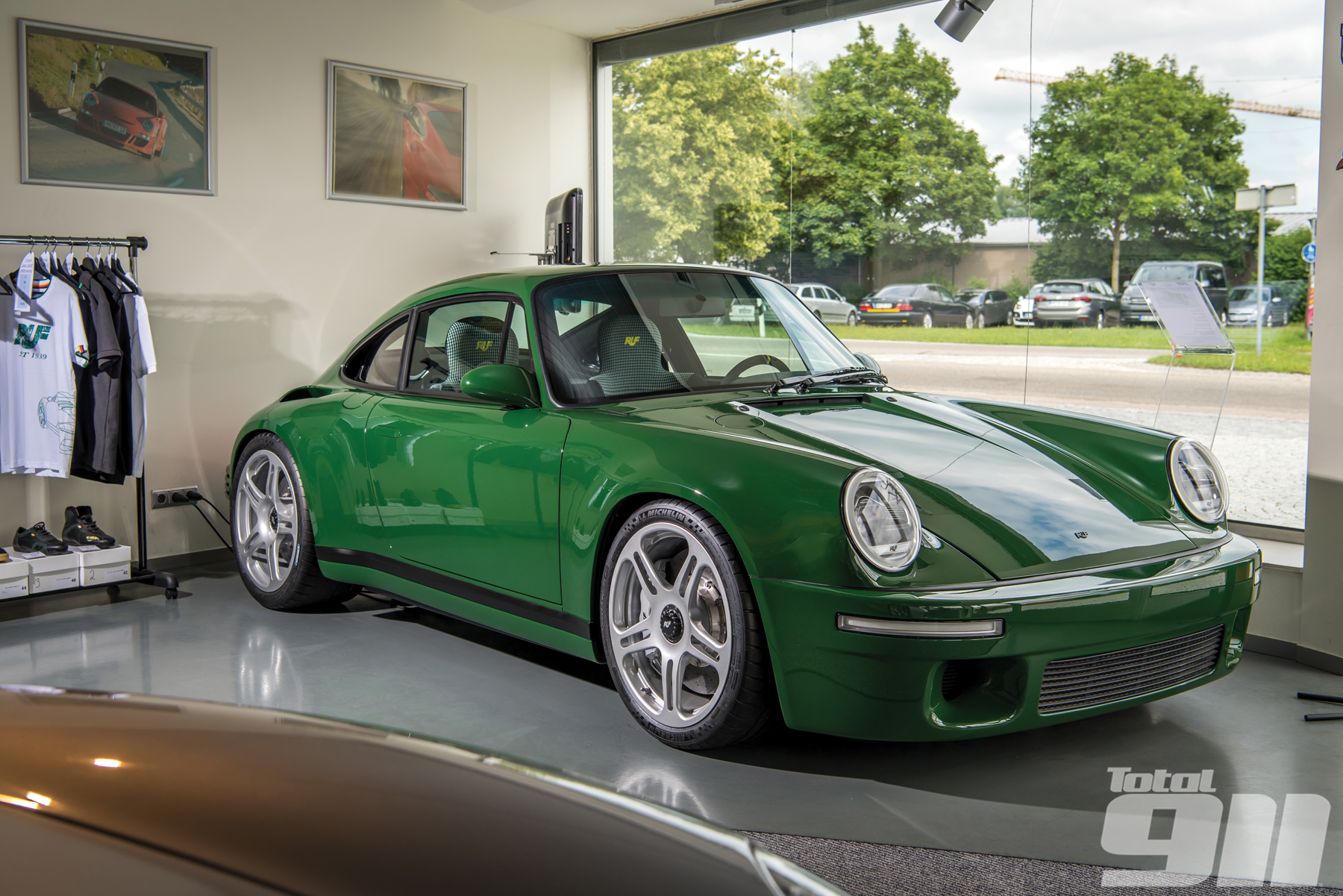
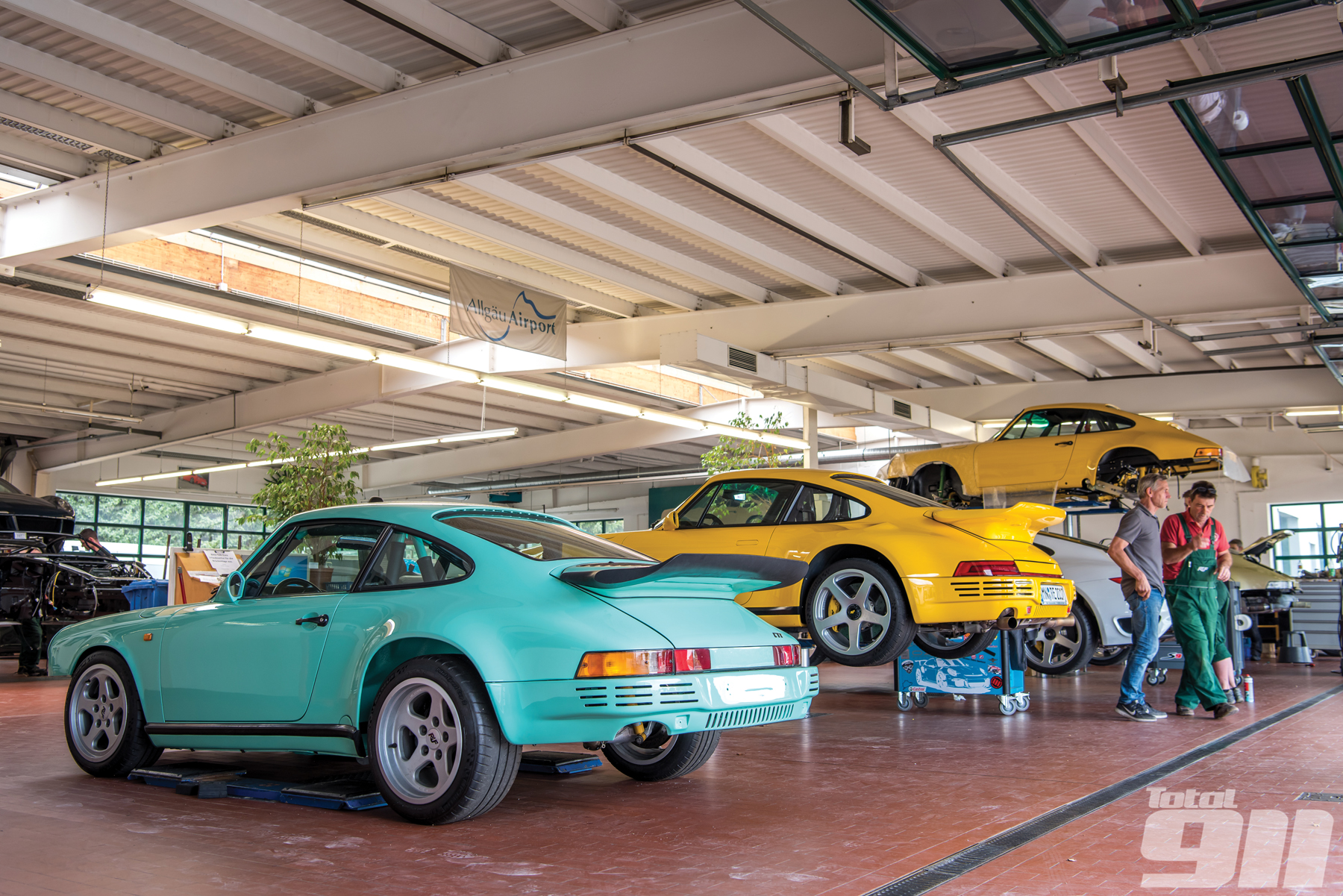
Comments (1)